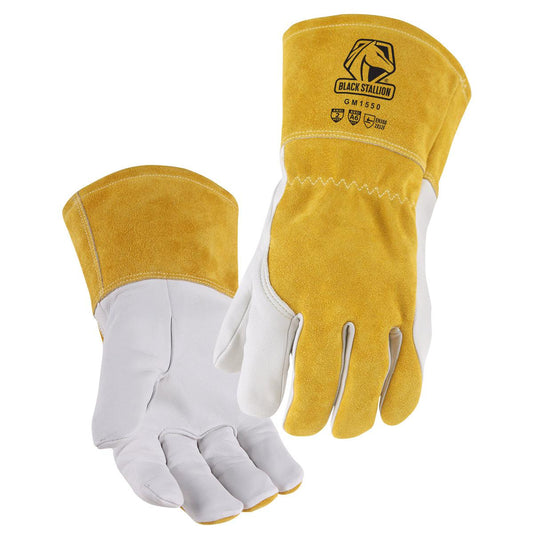Heat distortion occurs when an uneven level of heat is applied to an area of metal during the course of welding. Some heat distortion can be so severe that it can cause the piece of metal being welded to be unusable. Controlling the level of heat distortion that the metal you are working on is not an exact science and can vary depending on the thickness and type of metal and the welding process being used to create the weld. To minimize the level of heat distortion that your work piece experiences, you may want to run a test on a piece of scrap metal similar to what you will be working on. Testing how much heat the metal can take will help the welds you create experience less distortion during the welding process.
To begin the testing process you will need to place the two pieces of scrap metal on top of your welding table. Next, you will need to power on your MIG welder and adjust the wire speed and heat setting for the type of metal you will be working with. If you are unsure of what settings to use there is typically a chart attached to MIG welders that will provide you with recommended settings for the gauge of metal you will be welding. Once you have determined the settings to use for the test pieces, you can now put your welding helmet and gloves on.
After you have put on all of your welding safety gear, you should set-up the scrap pieces of metal to resemble how the larger pieces will be welded. Once your scrap pieces of metal are in the proper position you should line up the welding wire coming out of the MIG gun with the area where the two pieces of metal intersect. When your MIG welding gun is in the proper location you should use the welding gun to perform a tack weld on the two pieces of metal, then move the MIG gun to the opposite end of the metal pieces and perform another tack weld. This step should be repeated until you have a tack weld located every two to three inches along the length of the two pieces of scrap metal.
Once you have placed tack welds along the piece of metal, you are now ready to run a weld bead along the tacked weld joint. After you have placed a weld bead along the length of the metal, you will need to allow it to cool before attempting to handle the metal. Once the metal has cooled you should inspect the test pieces, looking for any bended areas of metal. If you find any areas of heat distortion, pay attention to which direction the metal moved. Heat distortion can more easily be detected on stainless steel as opposed to carbon steel. Now that you have seen how and where the metal can be expected to distort, you can now begin welding your work piece.
To begin welding your work piece you should place it on your welding table and perform tack welds like you did on the test piece. You may also want to tack weld the work piece to your work table to prevent it from moving while you are welding. Based on how the test pieces distorted you can make any necessary adjustments at this time. After you have made the necessary adjustments, you can now begin to weld your pieces of metal together. Once the welding is finished, allow the metal to cool before attempting to handle it.


